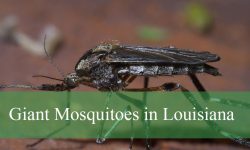Sea cucumbers are some of the most overlooked creatures in Hawaii’s coastal waters. Visitors often walk past them during low tide without realizing they are observing a remarkable animal with extraordinary abilities. These soft bodied invertebrates help maintain the balance of coral reefs and sandy environments throughout the Hawaiian Islands.
Despite their simple appearance, sea cucumbers perform vital ecosystem functions. They recycle nutrients. They clean sediment. They support marine life in ways that most people never imagine. Their biology, defense mechanisms, and behaviors reveal one surprising fact after another.
This article uncovers the shocking truths behind Hawaii’s sea cucumbers. From their unusual anatomy to their ecological importance, you will discover facts that few people have ever heard. Their story is far more fascinating than their slow movements suggest.
Understanding Sea Cucumbers in Hawaii

What Sea Cucumbers Really Are
Sea cucumbers belong to the class Holothuroidea, a group of echinoderms related to sea stars and sea urchins. Their bodies are elongated and flexible. Their skin contains small calcium structures called ossicles that provide support.
Although they resemble vegetables lying on the seafloor, they are complex animals. Their biology includes a specialized respiratory system, a water vascular system for movement, and powerful digestive processes that shape the marine environment.
Species Found in Hawaiian Waters
Hawaii is home to several sea cucumber species. Common examples include the tiger tail sea cucumber, the white spotted sea cucumber, the pineapple sea cucumber, and the surf redfish. Each species occupies different habitats ranging from deep sand channels to coral rubble zones and tide pools.
Their body coloration helps them blend with their surroundings. Some display mottled brown patterns while others show bright red or golden tones.
How They Fit Into Hawaii’s Ecosystems
Sea cucumbers are essential for maintaining healthy reef ecosystems. They feed on decaying organic matter. They process sediment. They keep marine environments clean and balanced. Without them, nutrient buildup and sediment compaction could negatively affect coral growth and water clarity.
Their presence indicates a functioning marine food web.
Sea Cucumber Anatomy You Never Knew About
A Body Without a Brain
Sea cucumbers do not have a true brain. Instead, they possess a ring of nerve tissue that coordinates movement and sensory responses. Despite lacking a central brain, they respond to touch, chemical cues, and light changes with surprising efficiency.
Their nervous system manages locomotion, feeding, and defense through simple but effective signaling.
Multiple Rows of Tube Feet
Sea cucumbers move using tube feet powered by hydraulic pressure. These tube feet allow them to crawl slowly across surfaces. Different species have different arrangements of tube feet which help identify them.
Tube feet also help sea cucumbers anchor themselves to the substrate, especially during strong currents or wave surges.
Internal Structures for Defense
Inside their bodies, sea cucumbers house specialized organs known as Cuvierian tubules. When threatened, some species expel these sticky threads to confuse predators. The threads are irritating and difficult for attackers to remove.
This defense mechanism is one of the most surprising behaviors in Hawaiian sea cucumbers.
Why Sea Cucumbers Matter in Hawaii’s Marine Ecosystems
The Sand Cleaning Role
Sea cucumbers act as living filtration systems. They consume sand and extract organic matter from it. After processing, they expel cleaner sand back into the environment.
This natural cleaning helps prevent sediment buildup. Clean sand supports coral health by allowing light to reach the reef surface.
Nutrient Cycling
As sea cucumbers feed, they break down organic particles and recycle nutrients. These nutrients become available to algae, bacteria, and other marine organisms. Without this cycle, nutrient abundance would decrease affecting food availability for many species.
Their digestive processes support a wide range of marine life.
Support for Reef Formation
Healthy coral reefs rely on balanced water chemistry and clean sediment. Sea cucumbers indirectly support coral growth by stabilizing the seafloor and preventing harmful microbial buildup.
In areas where sea cucumbers decline, reef health often suffers.
Secret Behaviors Found in Hawaiian Sea Cucumbers
Nighttime Feeding
Many sea cucumbers are nocturnal. They hide during the day to avoid predators and emerge at night to feed. Underwater divers may see them crawling slowly across sandy bottoms using their feeding tentacles to sweep food into their mouths.
Nighttime feeding keeps sediment movement natural and consistent.
Self Evisceration
One of the most shocking behaviors is their ability to expel internal organs when threatened. This phenomenon known as self evisceration allows them to distract predators.
The organs begin regenerating shortly after the event. This regeneration capability is rare among marine animals.
Burrowing into Sand
Some species burrow into sand to avoid predators or strong waves. Burrowing helps stabilize sediment and prevents erosion. These hidden movements shape the texture of Hawaii’s beaches more than most people realize.
The Life Cycle of Hawaii’s Sea Cucumbers
Reproduction Strategies
Most species reproduce by releasing eggs and sperm into the water. Fertilized eggs develop into free swimming larvae that drift with currents. After several stages, larvae settle onto the seafloor and transform into juvenile sea cucumbers.
This strategy allows them to disperse widely across reefs and sandy zones.
Growth and Development
Sea cucumbers grow slowly. Their bodies lengthen and thicken over time. Their ossicles increase in number and complexity. Growth rates depend on food availability, water temperature, and sediment quality.
Juveniles remain hidden for long periods before they become visible to divers and snorkelers.
Lifespan
Sea cucumbers can live for several years. Some species may live more than a decade under stable environmental conditions.
Their longevity contributes to consistent ecosystem functions.
Shocking Defense Mechanisms
Toxic Chemical Release
Certain sea cucumbers release toxins into the water when stressed. These compounds discourage predators and can temporarily alter nearby water conditions.
Although harmless to humans in normal conditions, these chemicals help the animal avoid predation.
Inflating Their Bodies
When threatened, some species inflate by taking in water. This makes them harder for predators to swallow. Inflated bodies also raise them off the substrate allowing quick escape from danger.
This defense is simple but effective.
Body Wall Toughness
Although soft to the touch, sea cucumber skin contains collagen that can rapidly change consistency. Their bodies become firm or flexible depending on their needs. This enables them to squeeze through tight spaces or resist tearing.
Sea Cucumbers and Human Interaction in Hawaii
Delicate Tide Pool Environments
Tide pools in Hawaii often contain sea cucumbers. These habitats are fragile. Human handling can stress these animals. Disturbance may cause evisceration or toxic release.
Responsible tide pooling practices help protect local populations.
Harvesting Concerns
Sea cucumbers are harvested in some regions of the world for food and traditional medicine. Hawaii regulates collection to prevent overharvesting.
Population monitoring ensures long term survival.
Educational Value
Sea cucumbers serve as important teaching tools for explaining marine ecology, nutrient cycling, and reef dynamics. Schools and marine conservation groups use them to raise awareness.
Environmental Challenges for Hawaii’s Sea Cucumbers
Climate Change
Rising ocean temperatures affect sea cucumber metabolism, reproduction, and larval survival. Warm water alters food availability and changes their distribution.
Pollution
Sediment pollution, chemical runoff, and microplastics threaten sea cucumbers. Polluted sediment disrupts feeding and digestion. Harmful chemicals accumulate in their tissues.
Coastal Development
Construction near shorelines increases sedimentation. Excess sediment can smother sea cucumber habitats and reduce food availability. Protecting reef systems helps support their populations.
Sea Cucumbers and Reef Health in Hawaii
Indicators of Ecosystem Balance
High sea cucumber populations signal healthy reefs. They indicate clean sediment, stable nutrient cycling, and strong microbial communities. Low populations may signal habitat stress.
Supporting Coral Spawning
Nutrient cycling by sea cucumbers benefits coral reproduction. Clean sediment improves coral spawning success and larval settlement.
Preventing Harmful Algal Growth
By consuming organic matter, sea cucumbers reduce the fuel for algal overgrowth. Excess nutrients can cause harmful blooms that damage reefs.
Surprising Scientific Discoveries
Regenerative Medicine Research
Sea cucumbers’ ability to regenerate organs has inspired biomedical research. Scientists study their collagen and regenerative pathways for potential medical applications.
Their Role in Carbon Sequestration
By reworking sediment, sea cucumbers may influence carbon storage in marine ecosystems. Their digestion helps lock carbon in deeper layers of the seafloor.
Immune System Complexity
Sea cucumbers possess sophisticated immune responses. Their ability to neutralize harmful microbes while processing sediment is more advanced than once believed.
Human Impact and Conservation Needs
Protecting Sensitive Areas
Marine protected areas safeguard sea cucumber habitats. These zones limit fishing, pollution, and development. Hawaii’s conservation policies emphasize preserving key reef ecosystems.
Community Education
Programs encouraging responsible snorkeling and tidepool exploration help reduce harm. Many visitors are unaware that touching sea cucumbers can stress them severely.
Monitoring Populations
Scientists use underwater surveys to track density changes. These data help identify stress factors and develop management plans.
Daily Life of Hawaiian Sea Cucumbers
Feeding Through Tentacles
Sea cucumbers use tentacle like structures around their mouths to collect food. They place each tentacle into their mouth while feeding. This rhythm continues throughout the night.
Sediment Mixing
Their movement continually mixes sediment. This prevents anaerobic dead zones from forming and keeps microbial processes active.
Resting Periods
Sea cucumbers rest during the day by anchoring to rocks or burying themselves partially in sand. Rest reduces energy use and helps avoid predators.
FAQs About Sea Cucumbers in Hawaii
Are sea cucumbers dangerous to humans
They are not dangerous unless handled roughly. Some release toxins when stressed.
Can I pick up a sea cucumber
It is not recommended. Handling can cause stress and harm the animal.
Why do sea cucumbers clean sand
Feeding on sediment removes organic matter and recycles nutrients.
Do sea cucumbers have brains
They do not have a brain but possess a nerve ring that controls movement.
Where can I find them in Hawaii
They appear in tide pools, sandy flats, coral rubble, and shallow reefs.
How long do they live
Some sea cucumbers live more than ten years under stable conditions.
Why do they expel their organs
Evisceration is a defense mechanism used to confuse predators.
What do they eat
They consume microscopic organic particles found in sediment.
Are sea cucumbers protected in Hawaii
Some areas restrict harvesting to protect populations.
Do they help coral reefs
Yes. Their feeding and sediment processing support coral health.
Conclusion
Sea cucumbers in Hawaii represent some of the ocean’s most astonishing and misunderstood creatures. Their slow movements conceal remarkable abilities such as organ regeneration, sediment cleaning, and powerful chemical defense mechanisms. Their presence shapes reef ecosystems, supports coral health, and maintains environmental balance.
Understanding these hidden facts reveals just how important sea cucumbers are to Hawaii’s marine landscapes. As coastal environments change, protecting these unique animals becomes increasingly important. Their story reminds us that even the most ordinary looking creatures contribute extraordinary value to the natural world.






